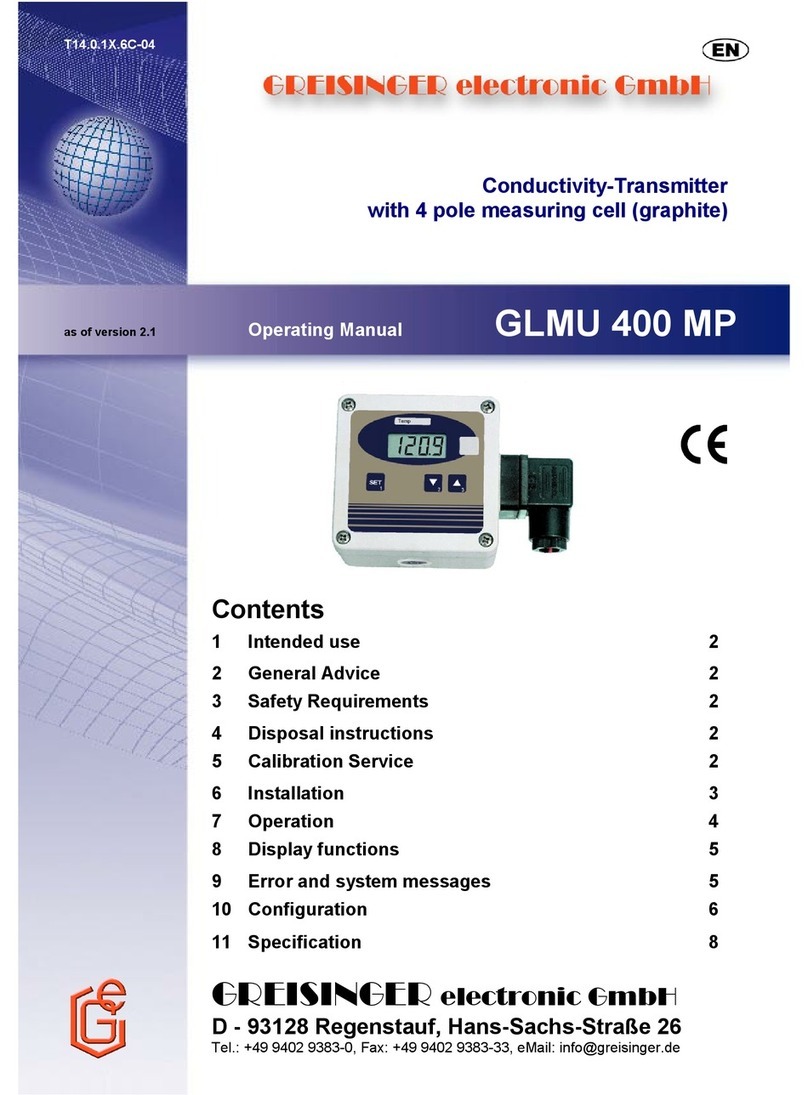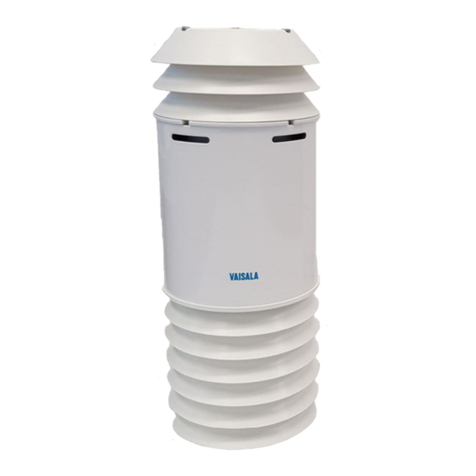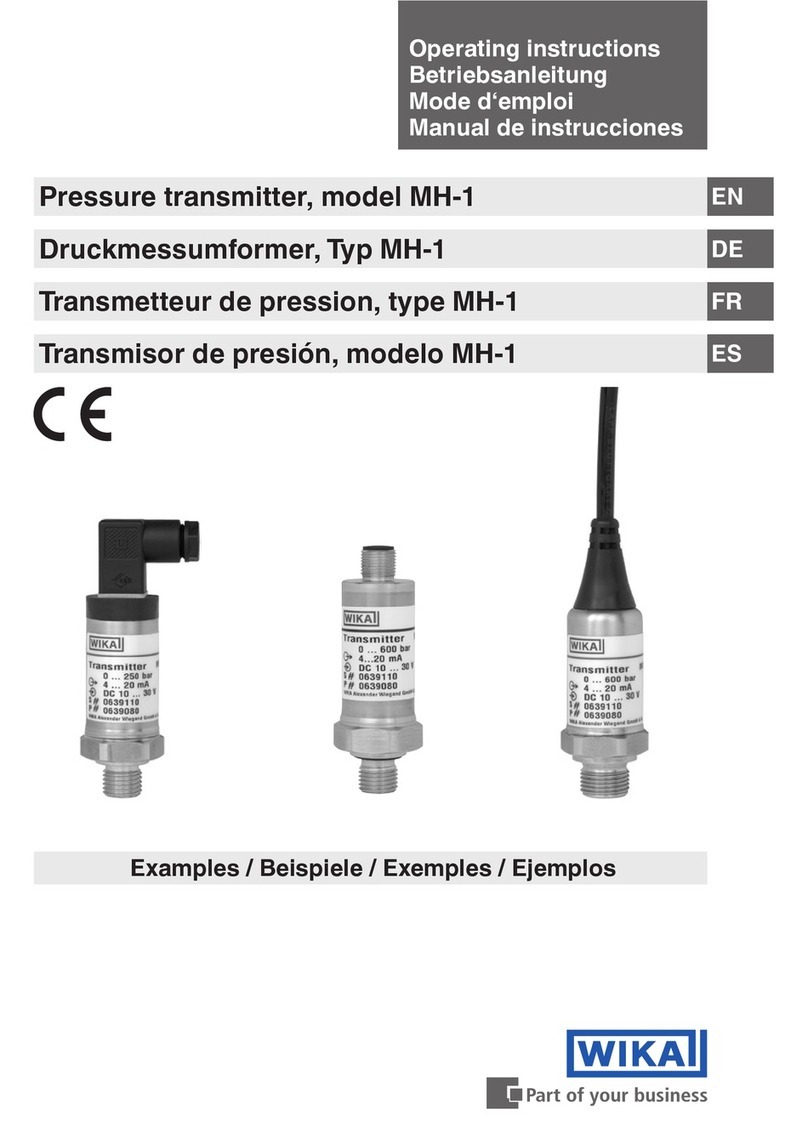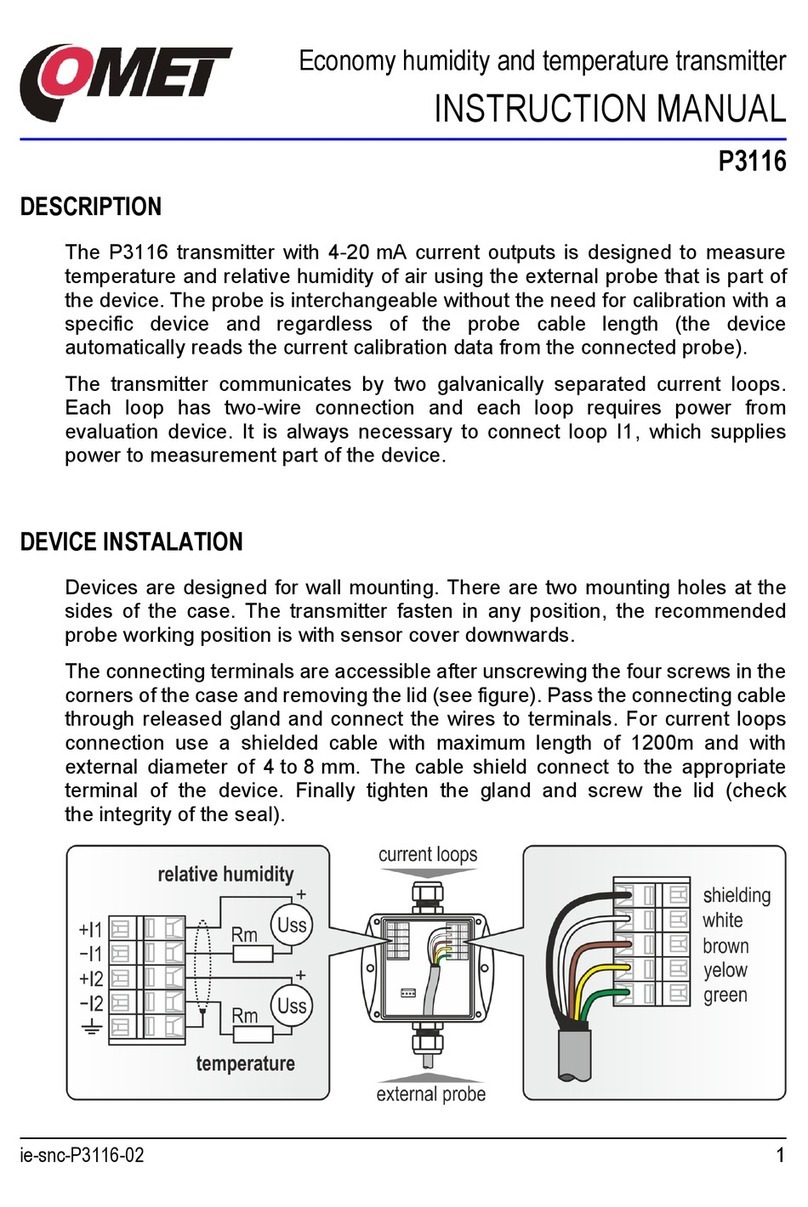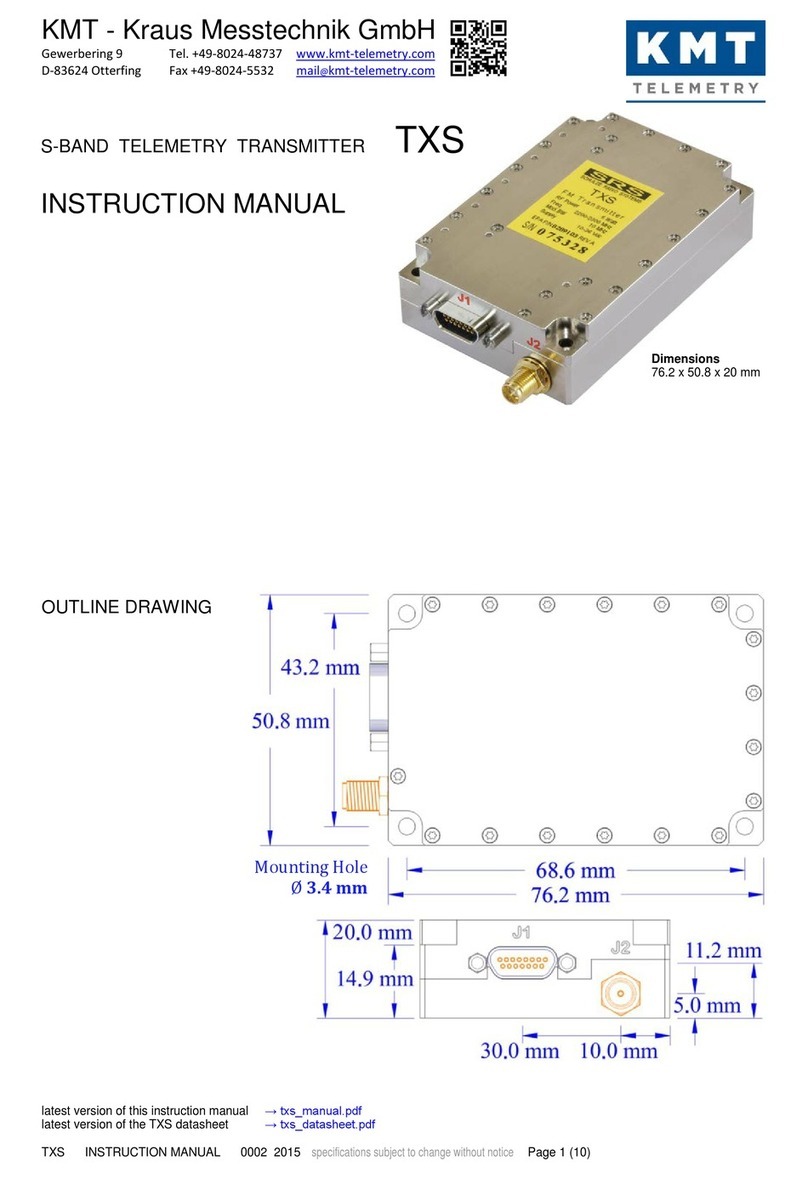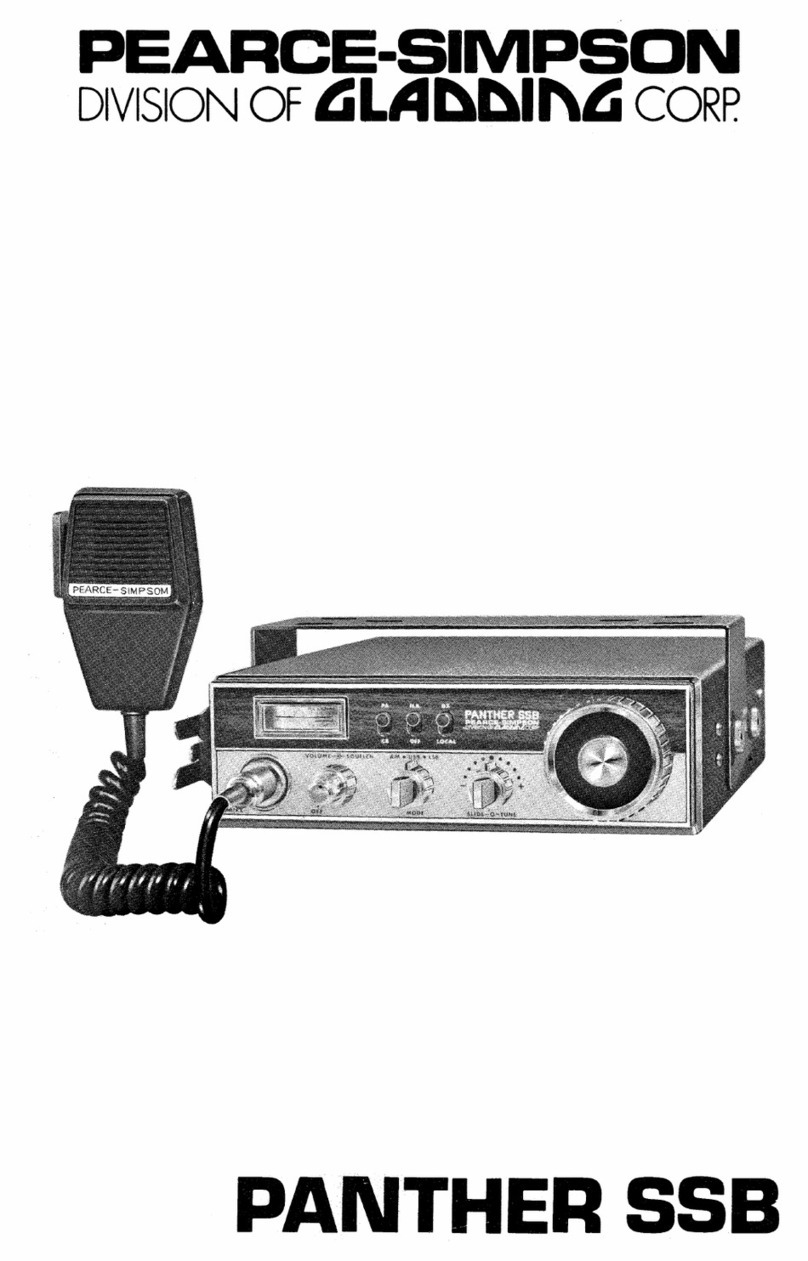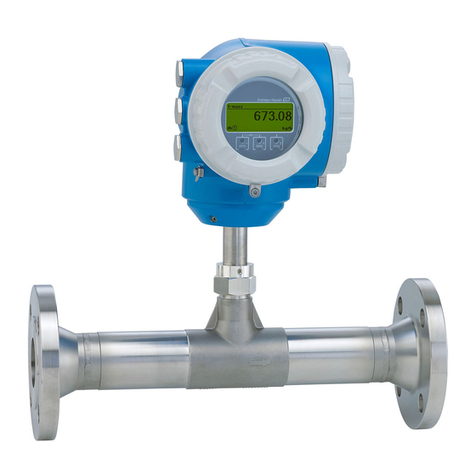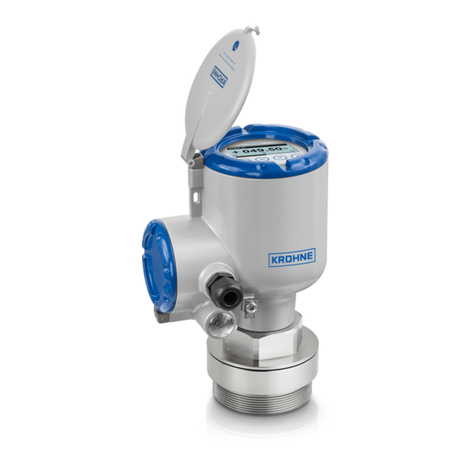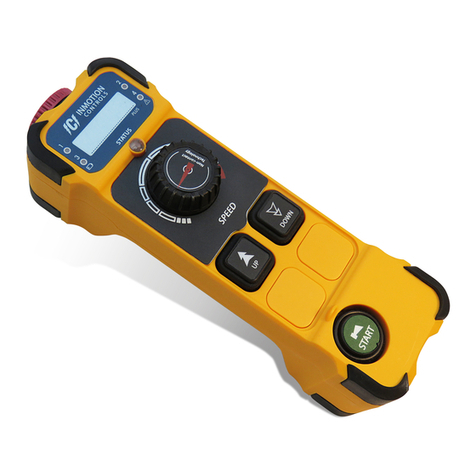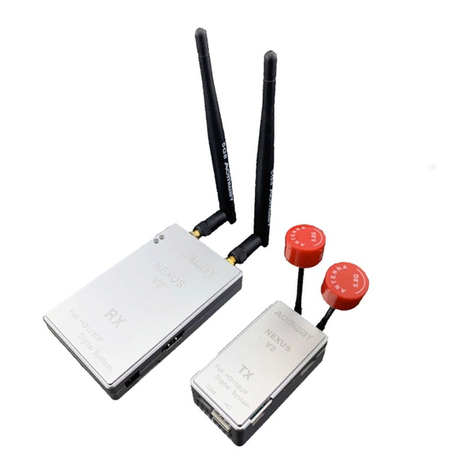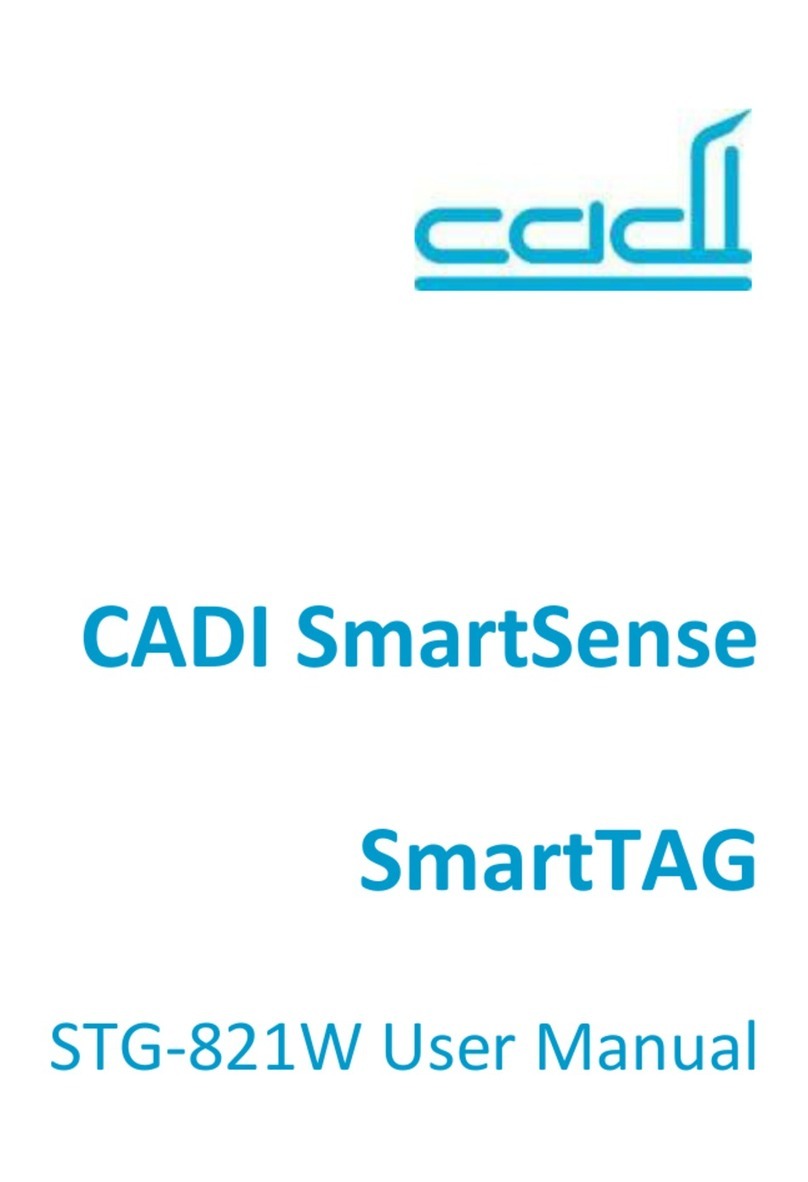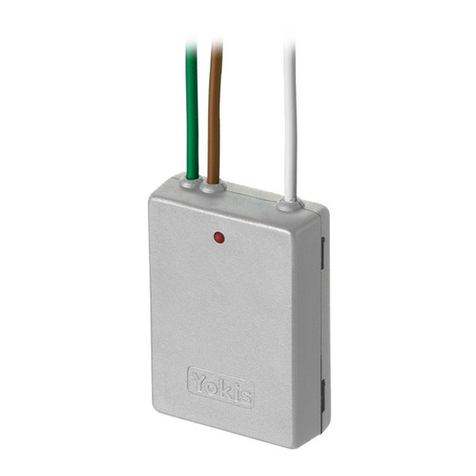GREISINGER electronic GLMU 200 MP User manual

T14.0.0X.6C-02
Operating Manual for conductivity-transmitter
GLMU 200 MP
1 Specification
Measuring range 1 (one of the following can be configured):
Range (rAnG)=0 Range (rAnG)=1 Range (rAnG)=2 Range (rAnG)=3
Conductivity 0.0 ... 200.0 mS/cm 0.00 ... 20.00 mS/cm 0 ... 2000 µS/cm 0.0 ... 200.0 µS/cm
Resistivity 5.0 ... 100.0 Ohm·cm 50 ... 1000 Ohm·cm 0.50 ... 10.00 kOhm·cm 5.0 ... 100.0 kOhm·cm
TDS - - 0 ... 2000 mg/l 0.0 ... 200.0 mg/l
Salinity 0.0 ... 70.0 - - -
Meas. range 2 Temperature: -5.0...140.0 °C (resolution 0.1°C or 0.1°F, NTC10k)
Attention: Consider application range of measuring cell: 0..80°C
Accuracy: (at nominal temperature = 25°C)
Measuring: conductivity: ±0,5% of measured value ±0,3 FS
temperature: ±0.1°C of measured value ±1 Digit
Add. output signal: ±0.2 % FS
Measuring cell: 4 electrode measuring cell with temperature sensor NTC10k,
7 pole connector
Cell constant K: 0.45..0.65, determined and adjusted ex works
Temperature compensation: non linear function, linear function (coefficient configurable) or none
Min-/Max-Value Memory: Min and max measured values are stored
Output signal: refer to type plate, freely scaleable
Scaling: By entering display values for 4mA (or 0V) and 20mA (or 1V/10V) output
Connection: 4 - 20 mA (2-wire) – output signal electrically isolated
for option AV01, AV10: 0 - 1 (10) V (3-wire) – output signal electrically isolated
Auxiliary energy:
(supply voltage) Uv = 12 - 30 V DC (4-20mA)
Uv = 12 - 30 V DC, max. 10mA (0-1V) Uv = 18 - 30 V DC, max. 10mA (0-10V)
or refer to type plate
Reverse voltage protection: 50V permanent
Perm. impedance
(at 4-20mA):RA(Ohm) < ( (Uv - 12V) / 0.02A )
Example: for Uv = 18V: RA< (18V - 12V) / 0.02A => RA< 300 Ohm
Permissible load (at 0-...V):RL(Ohm) > 3000 Ohm
Adjusting: via keypress. Conductivity by editing cell constant K (CELL)
Temperature by offset and scale.
Display: approx. 10 mm high, 4-digit LCD-display
Ambient conditions for electronics:
Nominal temperature: 25°C
Operating condition: -25 to 50°C, 0 to 95 %RH (non-condensing)
Storage temperature: -25 to 70°C
Ambient of standard measuring cell -5 to 80°C (short time up to 100°C)
Housing: ABS (IP65)
Dimensions: 82 x 80 x 55 mm (without elbow-type plug and sensor tube)
Mounting: With holes for wall mounting (in housing - accessible after cover has been removed).
Mounting distance: 50 x 70mm, max. shaft diameter of mounting screws is 4 mm.
Electrical connection: elbow-type plug conforming to DIN 43650 (IP65),
max. wire cross section: 1.5 mm², wire/cable diameter from 4.5 to 7 mm
EMC: In accordance with EN61326 +A1 +A2 (appendix A, class B), additional errors: < 1% FS.
When connecting long leads adequate measures against voltage surges have to be taken.
The electrode connections have to be protected sufficiently against ESD pulses, if the
device is used in areas with risk of ESD.
GREISINGER
electronic GmbH

T14.0.0X.6C-02 User’s Manual GLMU 200 MP page 2 of 8
2 Safety Requirements
This device has been designed and tested in accordance with the safety regulations for electronic devices.
However, its trouble-free operation and reliability cannot be guaranteed unless the standard safety measures
and special safety advises given in this manual will be adhered to when using the device.
1. Trouble-free operation and reliability of the device can only be guaranteed if the device is not subjected to
any other climatic conditions than those stated under "Specification". If the device is transported from a
cold to a warm environment condensation may cause in a failure of the function. In such a case make
sure the device temperature has adjusted to the ambient temperature before trying a new start-up.
2. General instructions and safety regulations for electric, light and heavy current plants, including domestic
safety regulations (e.g. VDE), have to be observed.
3. If device is to be connected to other devices (e.g. via PC) the circuitry has to be designed most carefully.
Internal connection in third party devices (e.g. connection GND and earth) may result in not-permissible
voltages impairing or destroying the device or another device connected.
4. If there is a risk whatsoever involved in running it, the device has to be switched off immediately and to be
marked accordingly to avoid re-starting.
Operator safety may be a risk if:
- there is visible damage to the device
- the device is not working as specified
- the device has been stored under unsuitable conditions for a longer time.
In case of doubt, please return device to manufacturer for repair or maintenance.
5. Warning:
Do not use these product as safety or emergency stop devices, or in any other application where failure of
the product could result in personal injury or material damage. Failure to comply with these instructions
could result in death or serious injury and material damage.
3 Installation
3.1 Design types, dimension

T14.0.0X.6C-02 User’s Manual GLMU 200 MP page 3 of 8
3.2 General installation instructions
To mount the connection cable (2-, 3-, or 4-wire depending on type of device) the elbow-type plug screw has
to be loosened and the coupling insert has to be removed by means of a screw driver at the position
indicated (arrow).
Pull out connection cable through PG glanding and connect to the loose coupling insert as described in the
wiring diagram. Replace loose coupling insert onto the pins at the transducer housing and turn cover cap
with PG glanding in the direction desired till it snaps on (4 different starting positions at 90° intervals). Re-
tighten the screw at the angle plug.
3.3 Assignment of elbow-type plug: (depending on type)
4-20mA (2-wire connection) voltage (3-wire connection)
1 = supply voltage +Uv 1 = signal +
2 = GND / signal 3 = supply voltage +Uv
(4) = supply voltage –Uv
The type current or voltage output is set by works and cannot be changed
3.4 Terminal assignment of meas. cell socket
contact no. Standard-Cell (K ~ 0.55)
1 Temperature +
2 Temperature GND
3 Supply 1
4 Signal 1
5 Signal 2
6 Supply 2
7 Not busy
3.5 Usage of Unit-Labels
As the transmitter is a multiple purpose device, many different display units are
possible, eg. µS/cm, kOhm·cm.
Therefore unit-labels (within scope of supply) can be shoved between the case cover
and the front foil behind the transparent unit-window.
To replace a label, unscrew the cover, pull out the old label (if present) and shove in the
new one.
The unit depends on the settings of the Cell-constant, the function and the measuring range!
Please refer to table in chapter “Configuration of the device”
3.6 Calibration Services
Calibration certificates – DKD-certificates – other certificates:
If device should be certificated for its accuracy, it is the best solution to return it with the refering sensors to
the manufacturer.
Only the manufacturer is capable to do efficient recalibration if necessary to get results of highest accuracy!

T14.0.0X.6C-02 User’s Manual GLMU 200 MP page 4 of 8
A
rrow to Temp indicates
temperature display
4 Operation
4.1 General informations about the conductivity measuring
4.1.1 The standard measurung cell
During the measurement, the conductivity probe must be be dipped at least 30mm into the medium.
At the one hand to allow a reproducable electrical field around the measuring cell, at the other hand to allow
the temperature sensor (located in metall cover within the measuring cell) to adjust to the medium
temperature.
When changing between different solution the probe should be rinsed thoroughly.
Measuring cell must never come into contact with water-repellent materials such as oil or silicone!
If conductivity measured is much higher or lower than expected this may be due to the electrode being soiled
with nonconducting or conducting residues. In this case the measuring cell has to be cleaned with a watery
soap solution.
Especially when measuring media with low conductivities the electrode the media should flow at sufficient
speed though the cell.
4.1.2 Salinity measuring
The salinity (salt content) of seawater can be determined in the measuring mode „SAL“ (basis: International
Oceanographic Tables; IOT)
The salinity of standard-seawater is 35 ‰ ( 35g salt per 1kg seawater).
The values are displayed in ‰ (g/kg).
4.1.3 TDS measuring
At the TDS measuring the dry residues or total dissolved solids value is caculated by means of the
conductivity and a calculation factor (C.tdS). This factor has to be evaluated for the refering type of solution.
The values are displayed in mg/l.
4.2 Display functions
4.2.1 Currently measured values
During normal operation the conductivity display value is displayed.
By short press of key ‘SET’ (1) the temperature in [°C] will displayed vor 10 seconds.
display of conductivity value display temperature
4.2.2 Min/Max Value Memory
watch Min values (Lo): press ‘down‘(2) shortly once display changes between ‘Lo‘ and Min values
watch Max values (Hi): press ‘up‘(3) shortly once display changes between ‘Hi‘ and Max values
restore current values: press ‘down‘(2) or ’up’(3) once again current values are displayed
clear Min-values: press ‘down’(2) for 2 seconds Min values are cleared. The display shows shortly ‘CLr‘.
clear Max-values: press ‘up’(3) for 2 seconds Max values are cleared. The display shows shortly ‘CLr‘.
After 10 seconds the currently measured values will be displayed again.

T14.0.0X.6C-02 User’s Manual GLMU 200 MP page 5 of 8
4.3 Error and system messages
Display Description Possible fault cause Remedy
Err.1
measuring range
exceeded Wrong signal
Temperature above 140°C not allowed.
Choose right measuring range for
conductivity
Err.2
Measuring value below
measuring range Wrong signal
Temperature below -5°C not allowed.
Choose right measuring range for
conductivity
Err.7
System fault Error in device Disconnect from supply and reconnect.
If error remains: return to manufacturer
Err.9
Sensor error Sensor or cable defective Check sensor, cable and connections
Er.11
Calculation not possible Calculation variable
missing or invalid Check temperature
8.8.8.8
Segment test The transducer performs a display test for 2 seconds after power up.
After that it will change to the display of the measuring.

T14.0.0X.6C-02 User’s Manual GLMU 200 MP page 6 of 8
5 Configuration
In the configuration the devices parameters can be changed.
The jumper has to be set, p.r.t. figure rigthand side. To set or
remove jumper, the housing cover has to be removed. Ex works
the jumper is set.
To change parameters press “SET” (key 1) two seconds, then the
parameter selection is started with the first parameter (display
shows “CELL”).
By pressing “SET” the desired parameter is selected, the editing of
the parameter values happens via keys 5(key 3) or 6(key 2).
Pressing “SET” again (after editing the parameter values) returns
to the parameter selection
Pressing “SET” again after the last parameter finishes the
configuration, stores the changes and restarts the device.
5.1 'CELL': Setting of the cell-constant of the connected measuring cell
Possible inputs: 0.300...1.200. Unit is 1/cm.
The value was evaluated and stored ex works for the connected electrode and is in between 0.45...0.65.
5.2 'Func': Setting of the measuring function
Possible inputs: cond conductivity
reSi: resistivity
tdS: TDS (total dissolved solids
SAL: Salinity = salt content of sea water
5.3 'rAnG': Setting of the conductivity or resistivity range
Choice the desired measuring range (range is depending on the function set above).
Possible inputs:
Range (rAnG)=0 Range (rAnG)=1 Range (rAnG)=2 Range (rAnG)=3
Conductivity (cond) 0.0 ... 200.0 mS/cm 0.00 ... 20.00 mS/cm 0 ... 2000 µS/cm 0.0 ... 200.0 µS/cm
Resistivity (rESi) 5.0 ... 100.0 Ohm·cm 50 ... 1000 Ohm·cm 0.50 ... 10.00 kOhm·cm 5.0 ... 100.0 kOhm·cm
TDS (tdS) - - 0 ... 2000 mg/l 0.0 ... 200.0 mg/l
Salinity (SAL) 0.0 ... 70.0 - - -
5.4 't.Cor': Setting of temperature compensation method
Possible inputs: off: no temperature compensation
nLF:non linear compensation for natural water according to EN27888 (DIN 38404).
For measurings of ground and surface water, drinking water or pure water.
Attention: restricted temperature range: -5..105°C
Lin: linear temp. compensation (for other aqueous solutions, correct factor has to be
entered)
5.5 't.Lin': Setting of temperature coefficient (only for t.Cor = Lin)
Possible input: 0.300 .. 3.000 [%]
5.6 't.rEF': Setting of reference temperature (only for t.Cor = nLF or Lin)
Possible input: 20°C or 25°C
5.7 'C.tdS': Setting of TDS-factor
Calculation factor for TDS (Total Dissolved Solids)-measurements, possible input: 0.40 .. 1.00.
The calculation factor depends on the composition of the medium and has to be determined
for each type of water.
If the jumper is removed from
the shown contacts, the
configuration is inaccessible,
values are
p
rotected.

T14.0.0X.6C-02 User’s Manual GLMU 200 MP page 7 of 8
5.8 'dA.Lo': Display at zero output (output scaling)
Enter the display value at which the output should have 4mA (or 0V).
The value range is depending on the selected measuring function (Func) and range (rAnG).
5.9 'dA.Hi': Display at maximum output (output scaling)
Enter the value at which the output should have 20mA (or 1 / 10V).
The value range is depending on the selected measuring function (Func) and range (rAnG).
5.10 'Unit' with Temp-arrow: Temperature unit
Temperature unit: All referring settings and displays are done in this unit.
Choice between °C and °F (ex works: °C)
5.11 'OFFS' with Temp-arrow: Offset of temperature measuring
The offset of the measuring will be shifted by this value, the input is in °C. Calculation: see below.
Max. input range: -5.0...5.0 °C or 'oFF': offset is deactivated (=0.0, ex works)
5.12 'SCAL' with Temp-arrow: Scale correction of temperature measuring
The scale of the measuring is changed by this value. Calculation: see below.
Max. input range: -5.00...5.00 or 'oFF': scale is deactivated (=0.00, ex works)
The adjusting of the temperature by means of offset and scale is intended to be used to compensate
deviations of the measuring. It is recommended to keep the scale correction deactivated (“oFF”). The display
value is given by following formula:
Temperature display = measured value - offset
With a scale correction (just for calibration laboratories, etc) the formula changes:
Temperature display = (meas. value - offset) * ( 1 + scale correction/100)
After pressing key 1 again, the instrument will restart (display 8888).
6 Disposal instructions
The device must not be disposed in the regular domestic waste.
Send the device directly to us (sufficiently stamped), if it should be disposed. We will dispose the device
appropriate and environmentally sound.
Table of contents
Other GREISINGER electronic Transmitter manuals
Popular Transmitter manuals by other brands
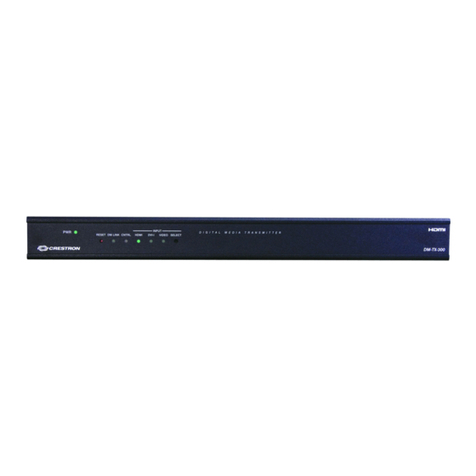
Crestron
Crestron DigitalMedia DM-TX-300N Operation guide

Siemens
Siemens SITRANS P500 Compact operating instructions

BAPI
BAPI H200 Installation and operating instructions
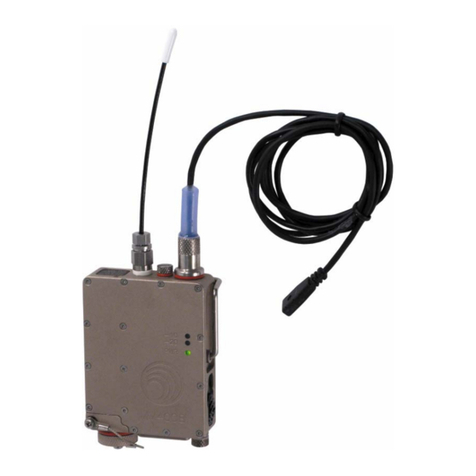
Lectrosonics
Lectrosonics MM400B instruction manual
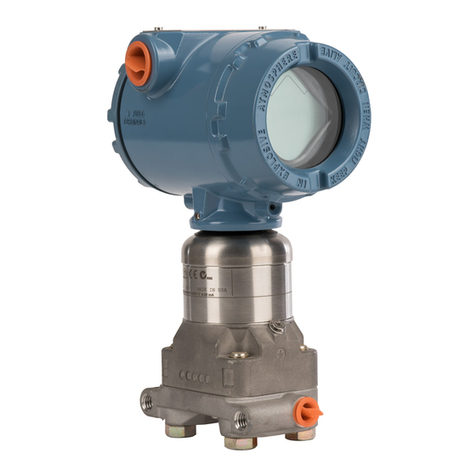
Emerson
Emerson Rosemount 3051S Series Reference manual
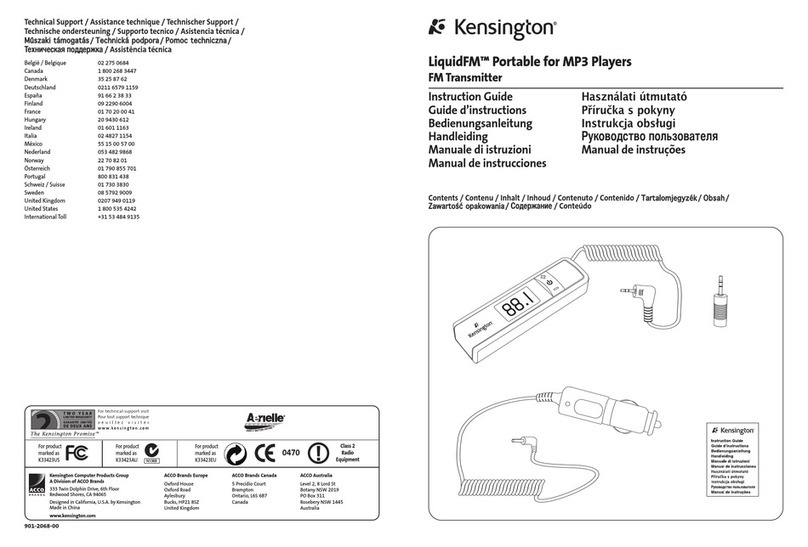
Kensington
Kensington liquidfm Instruction guide
